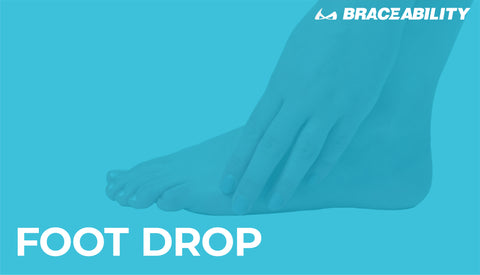Radial Nerve Palsy and Treatment Strategies: a Guide

What is Radial Nerve Palsy?
Radial nerve palsy (also known as Saturday night palsy) refers to when there has been an injury to the radial nerve. Oftentimes, it occurs when the nerve becomes compressed, affecting its function. This can lead to weakness in the muscles that the nerves supply, such as a wrist drop, or the inability to extend the wrist.

What is the Radial Nerve?
The radial nerve is the largest in the upper limb. Starting from the shoulder, it spans through the forearm to the back of the wrist. When functioning properly, the nerve helps you move your fingers, hand, wrist, and elbow. Read more about the nerve.
Causes of Radial Nerve Injury
- Traumatic Injury
- Long-term constriction of wrist
- Falling on arm
- Fractured humerus
- Improper use of crutches
- Compression
Also known as radial nerve neuropathy, compression occurs when there is too much pressure on the radial nerve. This can be caused by prolonged pressure on the nerve or repetitive motions involving the wrist and forearm.
- Medical Conditions
Certain medical conditions can create circumstances under which radial nerve injury is more likely. Infections, auto-immune disorders, or vascular issues can all lead to an injury in the nerve.

Symptoms of Radial Nerve Palsy
One of the most common symptoms of radial nerve palsy is wrist drop. Wrist drop occurs when the wrist simply hangs limply and the patient is unable to lift it.

Some other symptoms are pain, numbness from the triceps to the fingers, or inability to control the muscles from the triceps to the fingers.
Diagnostic Process
If you think you might be experiencing any form of nerve palsy, it is important to see your physician right away. To diagnose, your physician likely will perform a physical evaluation to determine weakness or numbness.
Other diagnostic tests could include an X-ray, MRI, nerve conduction study, or electromyography (EMG).
Once again, it is crucial to conduct a healthcare professional if you think you might be experiencing radial nerve palsy.
How Long Can I Expect it to Last?
Radial nerve palsy recovery varies from case to case. It can take weeks, months, or rarely even years to completely recover. In any case, it is important to address the underlying issue.
Managing and Treating Radial Nerve Palsy
Treatment for radial nerve palsy can span from increased rest to surgery. Treatment options should be considered with a medical professional's opinion, as well as what works best for you. The following are some treatment suggestions:
Conservative Approaches
Rest and immobilization: Resting the nerve could help reduce pain in less severe cases. This is not a very active approach to treatment, so it is likely only to be helpful in cases of post-surgery recovery or when a pressure reduction is necessary.
Physical therapy exercises: Physical therapy can be a crucial part of anyone’s treatment plan. The goal of physical therapy is to address the functional shortcomings caused by nerve damage, promote healing, and speed up the recovery process. Here are a few helpful and easy exercises:
Wrist Extension Stretch
This stretch should be done frequently throughout the day, especially before activities that involve gripping. Straighten your arm and bend your wrist back as if signaling someone to “stop.”
Use your opposite hand to apply gentle pressure across the palm and pull it toward you until you feel a stretch on the inside of your forearm. Hold for 15 seconds. Repeat 5 times, then perform this stretch on the other arm.

Radial Nerve Glides
These glides are designed to help restore nerve motion. This exercise will help the nerve glide without any pressure. Stand comfortably with your arms loose at your sides.
Drop your shoulder down and reach your fingers toward the floor. Internally rotate your arm (thumb toward your body) and flex your wrist with the palm up.

Gently tilt your head away from the side you are stretching. Raise your arm up and away from your body as you continue to flex your wrist and tilt your head. Hold each position of the glide for 3 to 5 seconds.
This exercise should be repeated for 5-8 reps, 2-4 times a day.
Tip: Make sure to stretch only to the point where slight tension is felt!
Surgical Approach
Some more extreme cases of radial nerve palsy require surgical intervention. The surgery may involve the removal of something that is putting pressure on the nerve, such as a cyst, tumor, or broken bone. The surgery may also be just to repair the nerve itself.
Either way, a complete recovery from surgery could take weeks to months, so surgery should only be considered in extreme cases.
A Middleground in Treatment: Splints
A splint, or a hand brace, can maintain joint motion and functional use is almost always required until nerve recovery can occur. Hand braces have several purposes in treating radial nerve palsy.
- Protection and immobilization: A splint can help protect and immobilize the affected area, preventing further injury.
- Prevention of wrist drop: Wrist drop often occurs in cases of radial nerve palsy, but a splint can help prevent that. A splint can support the wrist in either a neutral or extended position, preventing the hand from dropping.
- Reduction of pressure: If the palsy is due to an increase of pressure, then the splint can help reduce it by limiting certain problematic movements and positions.
- Allows for functional activities: Hand braces allow for continued use of the hand and fingers even during recovery.

Check out BraceAbility's cost-effective splint, providing an accessible solution for individuals seeking effective support during their recovery journey.
Recovery Tips
The steps above are just some suggestions to increase comfort and flexibility during recovery. More than likely, the ideal treatment plan will involve two or more of the previously mentioned strategies. A medical professional should always be consulted to find which treatment plan best suits you.
It is important to remain consistent in treatment efforts to prevent a relapse in any progress that has been made. When doing physical therapy, make sure to be careful and consistent in your exercises. Don’t push yourself too far, it should never get to the point of consistent pain.
If you’re wearing a splint, it is important to wear it consistently.
Life with Radial Nerve Palsy
Following a car crash, James Tu was left with severe radial nerve damage. After consistent physical therapy, he has regained much of his grip strength. Still, though, James’ everyday life is impacted.
“For a lot of the work I do, I end up using the computer quite a bit and typing, one thing that’s been challenging is not being able to type very quickly”.
James then puts on a splint that he has and compares the two results,
“When I’m using the glove that I have, it gives me a lot more of that lateral stability so I can type more accurately and get more work done”.
James was able to get back to work after physical therapy and a splint. His treatment path allowed him to get back to the rest of his life, too. In the video, he demonstrates how the splint helps him ride his motorcycle and drive his car.
Conclusion
Radial nerve palsy involves the function of the radial nerve being decreased to the point of muscle weakness or immobility in the hands and the wrist.
It can be caused by traumatic injury, compression, or a different medical condition.
A more common symptom of radial nerve palsy is wrist drop, but other symptoms are increased pain or inability to control some of the muscles in your arm.
Radial nerve palsy is diagnosed by a medical professional. It can last anywhere from weeks to years, so it is important to treat the underlying issue before a recovery plan is created.
A recovery plan can include increased time of rest, physical therapy, surgery, or the use of a splint.
If you suspect radial nerve palsy or are seeking effective treatment options, don't wait. Your journey to recovery starts now. Consult with a healthcare professional to get personalized guidance and explore the best treatment plan for you!










